
Delivering digital infrastructure in the AI age
The digital infrastructure sector's growth has been fueled by the hyperscalers in recent years. The rapid evolution of artificial intelligence and the metaverse is set to drive this "zeitgeist" sector to new heights.
8 min read
The emergence of generative artificial intelligence (gen AI) and the metaverse is driving an explosion in demand for digital infrastructure.
The past decade has already seen unprecedented levels of investment in digital infrastructure as a result of increasing smartphone penetration, industry digitalization and the rise of cloud computing, but the rapid evolution of AI technology, machine learning and the metaverse is propelling demand for data and computing power to even greater heights.
Powering these transformative technologies will require substantial investment in the data centers and networks that deliver the data and connectivity that AI and the metaverse will require to function.
Hyperscalers
The primary users of data center capacity and the main drivers of demand are hyperscalers, a group of large companies (including the likes of Amazon Web Services (AWS), Microsoft Azure, IBM Cloud and Google Cloud) that provide clients with computing power, storage and software architecture that allows them to scale up capacity across multiple servers and networks to meet the demands placed on software and technology systems at particular times.
According to Jones Lang LaSalle, there will be more than 1,000 hyperscaler data center sites in operation by the end of 2024, up from only 500 five years ago. This will see the hyperscale data market grow at a CAGR of 20 percent from 2021 to 2026.
These hyperscalers have increasingly become the industry's focus, with developers, operators and investors constructing increasingly large data center campuses. This in turn pushes demand for connectivity through fiber and towers.
Sustained investment from both hyperscalers and colocation developers in new data center capacity and the related digital infrastructure will be essential for meeting the excess demand that will come from AI and the metaverse.
Market drivers: Defining the metaverse and AI
And while AI has become more accessible and moved into the mainstream with the generative AI boom, companies are yet to fully grasp what these technologies mean for doing business, their growth and disruptive impact has nevertheless made investing in AI and the metaverse a commercial and strategic necessity for organizations.
The metaverse and the next evolution of the internet
The metaverse, for example, is still a broadly defined concept that can mean different things to different people. But even though the metaverse has yet to be precisely defined, it is influencing consumer behavior and corporate strategy.
In essence, the metaverse and the next evolution of the internet, and technologies that can be used to harness virtual reality and augmented reality to build virtual worlds and facilitate frictionless interaction between digital and physical spaces.
A KPMG survey of technology executives showed that 60 percent of respondents believe the metaverse can increase profits and lower operating costs as transactions shift from the physical to the virtual. McKinsey, meanwhile, estimates that the metaverse could generate up to US$5 trillion of value by 2030.
Business adoption of AI (the capacity for a computer to execute tasks that normally require human intelligence and judgment) has also surged, rapidly gaining traction in the operations of industries across the board in recent years.
The rapid growth and adoption of AI technology in recent years is just the beginning
According to DemandSage research, for example, there are more than 4.2 billion digital assistants such as Siri, Alexa and Google now in use, with more than 50 percent of consumers using these tools to find local businesses, while shopping using digital assistant voice search is set to deliver value of US$40 billion. In the pharmaceuticals sector, Wellcome Trust research shows that AI could have a transformative impact on drug discovery pipelines, delivering time and cost savings of between 25 percent and 50 percent; and in the wealth management industry, asset managers have built proprietary AI-powered tools that fund managers are relying on to benchmark portfolio company performance and source potential deal targets.
The rapid growth and adoption of AI technology in recent years is just the beginning. According to the International Data Corporation (IDC), annual global spending on AI software, hardware and services is forecast to grow at a compound annual growth rate (CAGR) of 27 percent over the five-year period to 2026, when it will exceed US$300 billion.
Challenges to be navigated
The need for digital infrastructure has ensured that capital has continued to flow into the sector, shielding developers and investors from macro-economic dislocation.
There are however challenges to be navigated:
- High margin developments of business-critical infrastructure expose operators and developers to potentially material liabilities. Legal obligations, particularly in the context of development and services, will need to be understood and calibrated to ensure that projects are both manageable from a corporate governance perspective and acceptable to the lending and investment community.
- Developers' contractual obligations are under strain. Inflationary pressures and supply chain disruption have impacted new data center construction and delayed projects from coming online. According to its most recent Data Centre Cost Index, infrastructure consultancy Turner & Townsend found that 95 percent of data center stakeholders were experiencing delays due to material shortages, with wait times for some equipment extending to 12 weeks or more. Delays have pushed projects over budget, adding to the cost pressures coming from rising commodity and labor prices. These are likely to lead to increasing developer default if legal documentation is not carefully negotiated.
- Environmental regulation and climate change pressures cannot be ignored. Data centers are incredibly power-consumptive, with some hyperscaler sites using as much power as 80,000 households, according to McKinsey. McKinsey analysis also shows that new computer chips and more powerful computers have seen average data center power densities more than doubling during the past five to six years. Government policies to reduce carbon emissions to net-zero have seen regulators pay closer attention to data centers' energy usage. An update to the EU's Energy Efficiency Directive, for example, will require data centers of 500 kw or bigger to report on energy usage and emissions from May 2024. Andrew Jay, Head of Data Centre Solutions, EMEA for CBRE, agrees that this is a challenge that the sector will need to confront, "New and existing Investors will continue to focus on the ESG credentials of these facilities and this scrutiny will become increasingly more important as the energy consumed by data centres becomes more significant when compared with other domestic usages." Legal documentation in this sector will need to move in the direction of transparency with respect to consumption and efficiencies to keep step with this agenda.
- Anti-trust and competition. The sector has found itself on the radar of competition and antitrust authorities too, with the UK's Competition and Markets Authority (CMA) launching a probe into the risk to competition in the UK data center ecosystem as a result of the dominant market share held by a handful of hyperscaler players. Regulators fear that a lack of competition in the market may make it difficult and pricey for customers to switch providers. M&A activity was slow in 2023 and these regulatory pressures are likely to become more evident as transaction volumes begin to pick up as anticipated by many.
- Financing structures. The increasing influence of hyperscalers is also reshaping the way data centers and digital infrastructure are financed. Private investment, for example, has been a key source of capital for data center development, with McKinsey noting that private equity's share of aggregate data center deal value increased from 42 percent between 2015 and 2018, to more than 90 percent by 2022. These dynamics, however, are shifting, as hyperscalers become more influential and leverage their positions as anchor customers to negotiate more favorable contracts and leasing terms, squeezing the margins of co-location data center operators in the process. This has tempered flows of private capital, with investors also moving cautiously for pricey data center assets in a volatile deal market that has been hampered by rising interest rates. With debt markets across the board also tightening as a result of rising rates, digital infrastructure operators and investors may need to explore new structures and options to finance roll-out of additional capacity in the short to medium term.
US$5tn
Metaverse could generate up to US4% trillion of value by 2030
Source: McKinsey
Digital infrastructure now offers investors exposure to assets with strong market positions and high levels of repeat revenue
Digital infrastructure: The foundation for AI and the metaverse
There is a necessity for more digital infrastructure to support the anticipated growth in AI and the metaverse.
Digital infrastructure encompasses all the underlying frameworks that allow digital tools to function, including hardware, software, network connectivity and data centers. It is the foundation of all the digital services, internet tools, connectivity and cloud computing applications that have become essential for modern economies.
AI and the metaverse application require particularly large data resources and computing power to function, and as uptake continues to accelerate, will place ever-greater loads on digital infrastructure capacity. According to Gartner research, generative AI accounted for less than 1 percent of data produced in 2021 but will swallow up 10 percent of capacity by the end of 2025–and continue to grow in subsequent years. Intel, meanwhile, has estimated that a 1,000x increase to current computing capacity will be required if the metaverse is to realize its full potential.
Andrew Jay is clear on the opportunity for the industry, "The AI boom is set to drive another wave of change and development for European data infrastructure. Much of the new capacity will be absorbed by the hyperscale operators, but significant opportunities exist for colocation vendors to develop new purpose-built facilities. The speed and scale of the growth is leading to a new entrance of capital partners who are eager to be at the forefront of the sector and capture the ever-expanding take-up in EMEA."
Demand for data and computing power is already outstripping supply, with emerging technologies fueling further appetite. Despite rising global interest rates, inflationary pressures and a weakening macro-economic backdrop, long-term demand drivers have positioned digital infrastructure as a fast-growing, resilient asset class for investors, developers, operators and lenders.
White & Case means the international legal practice comprising White & Case LLP, a New York State registered limited liability partnership, White & Case LLP, a limited liability partnership incorporated under English law and all other affiliated partnerships, companies and entities.
This article is prepared for the general information of interested persons. It is not, and does not attempt to be, comprehensive in nature. Due to the general nature of its content, it should not be regarded as legal advice.
© 2024 White & Case LLP

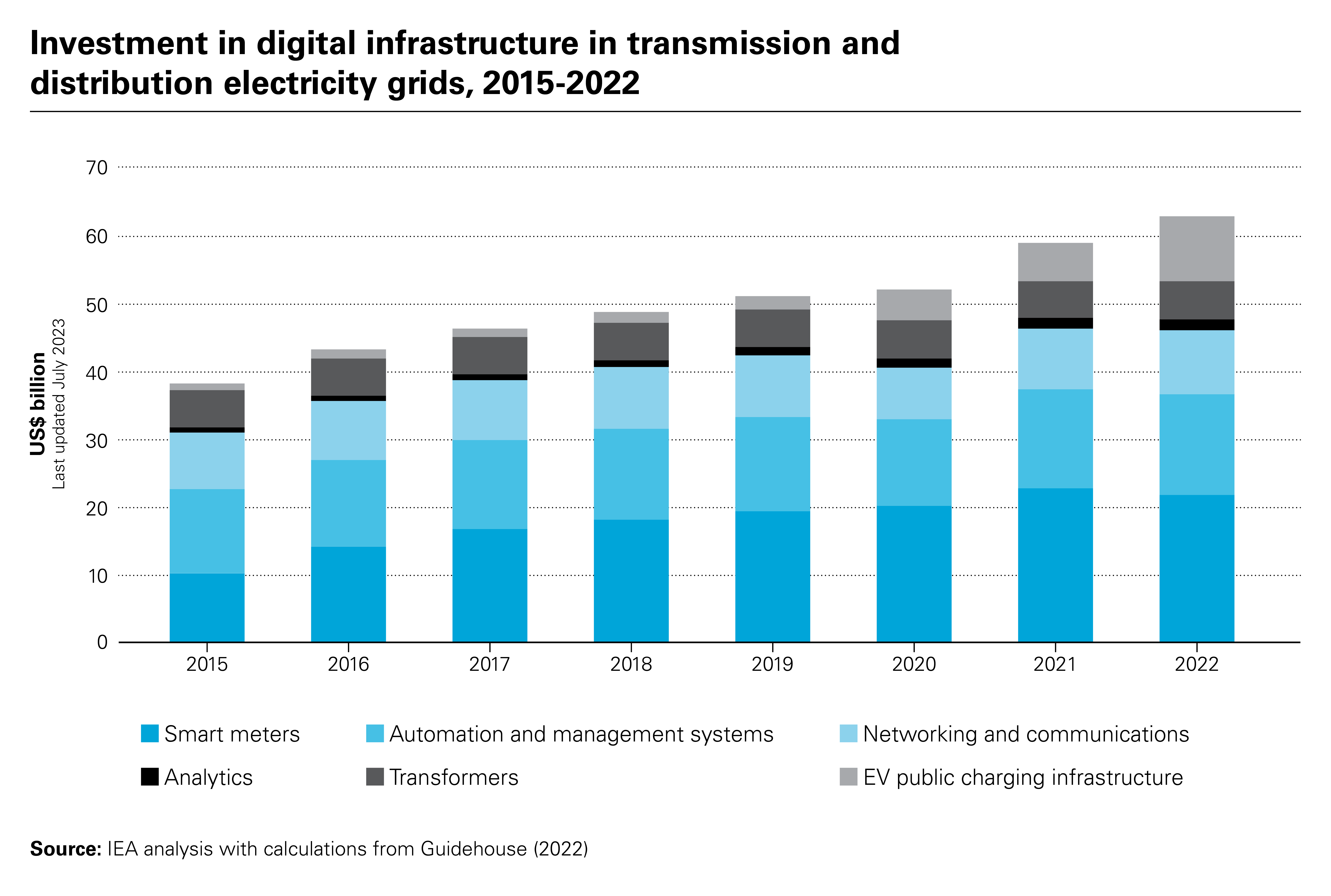 View full image: Investment in digital infrastructure in transmission and distribution electricity grids, 2015-2022 (PDF)
View full image: Investment in digital infrastructure in transmission and distribution electricity grids, 2015-2022 (PDF)
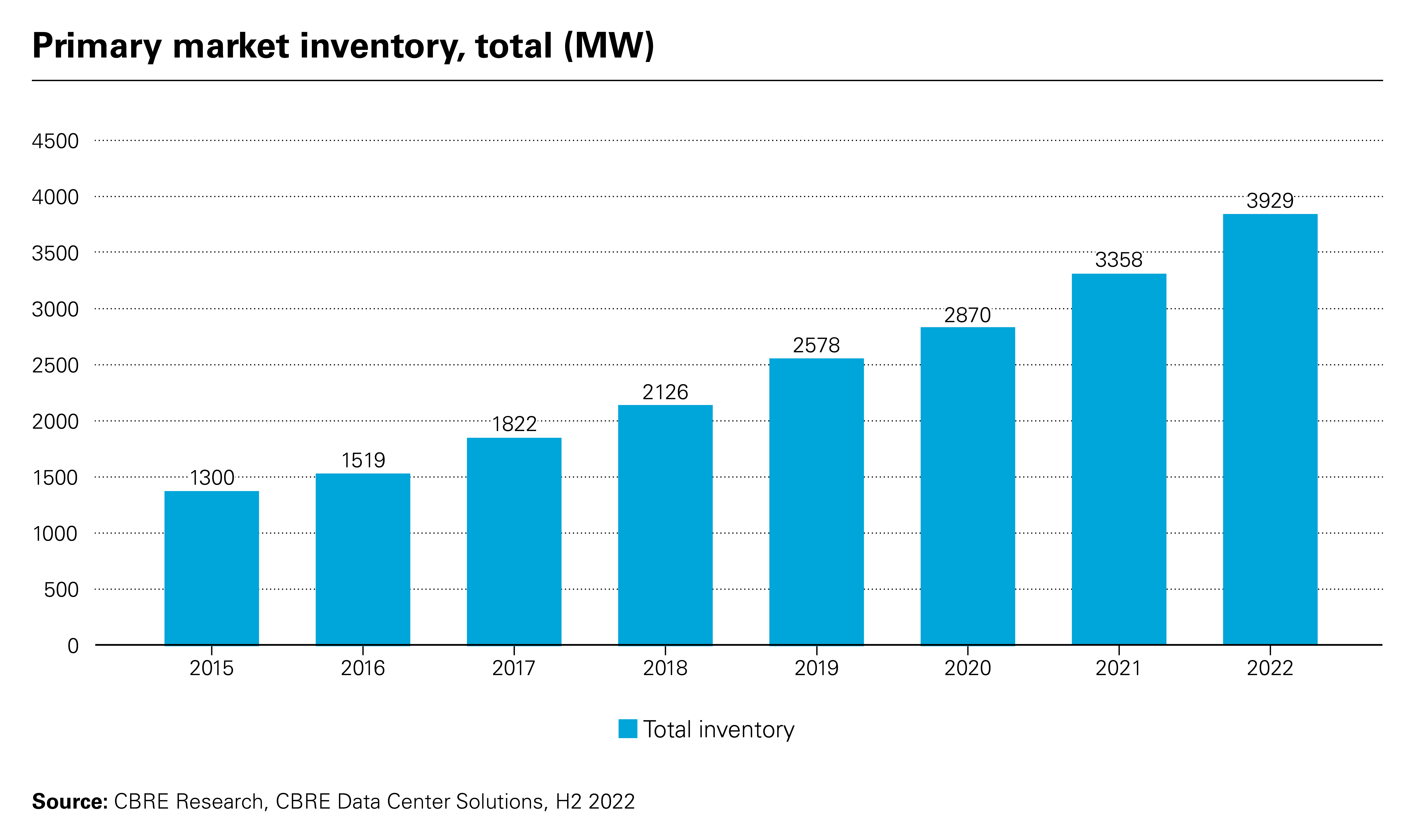 View full image: Primary market inventory, total (MW) (PDF)
View full image: Primary market inventory, total (MW) (PDF)
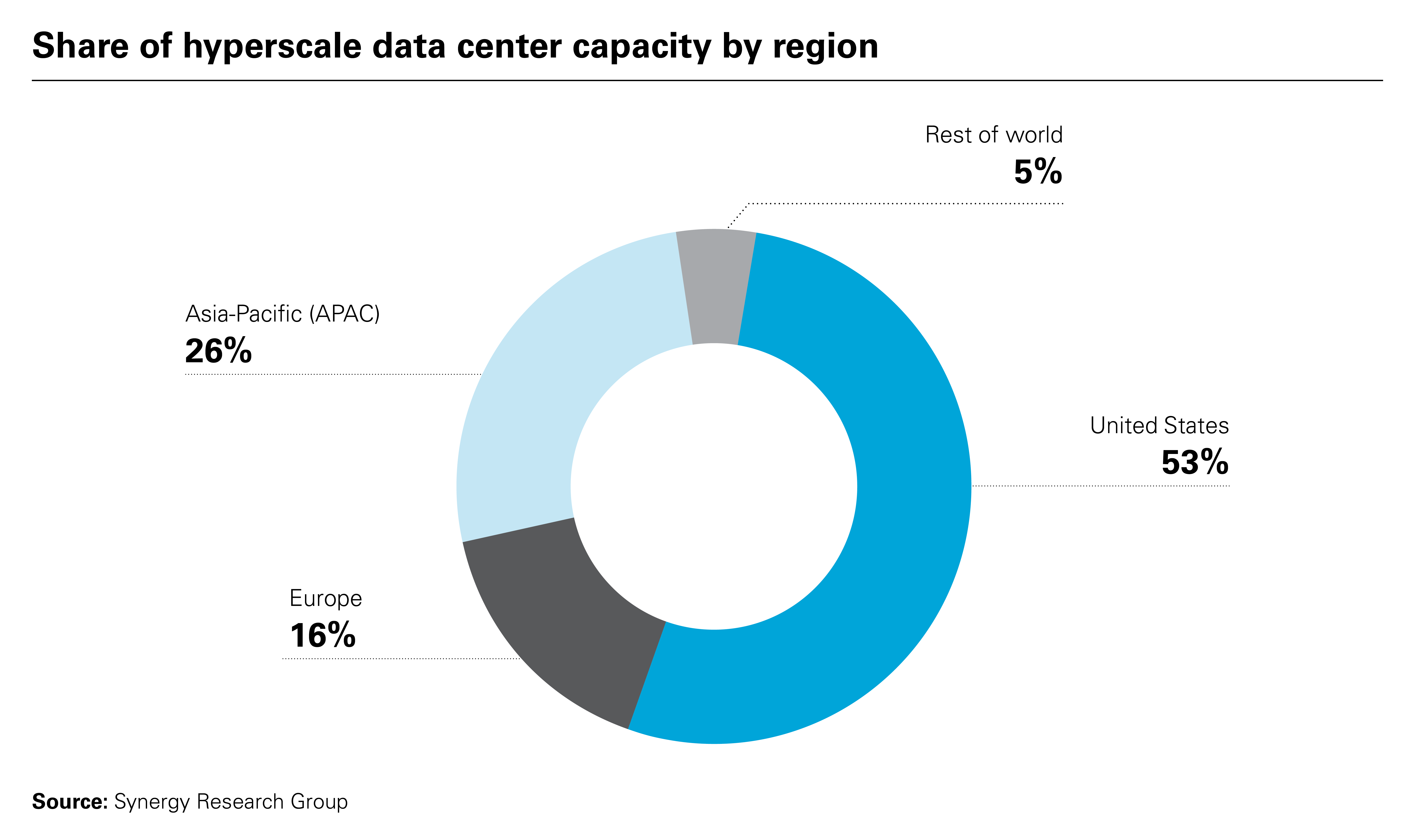 View full image: Share of hyperscale data center capacity by region (PDF)
View full image: Share of hyperscale data center capacity by region (PDF)
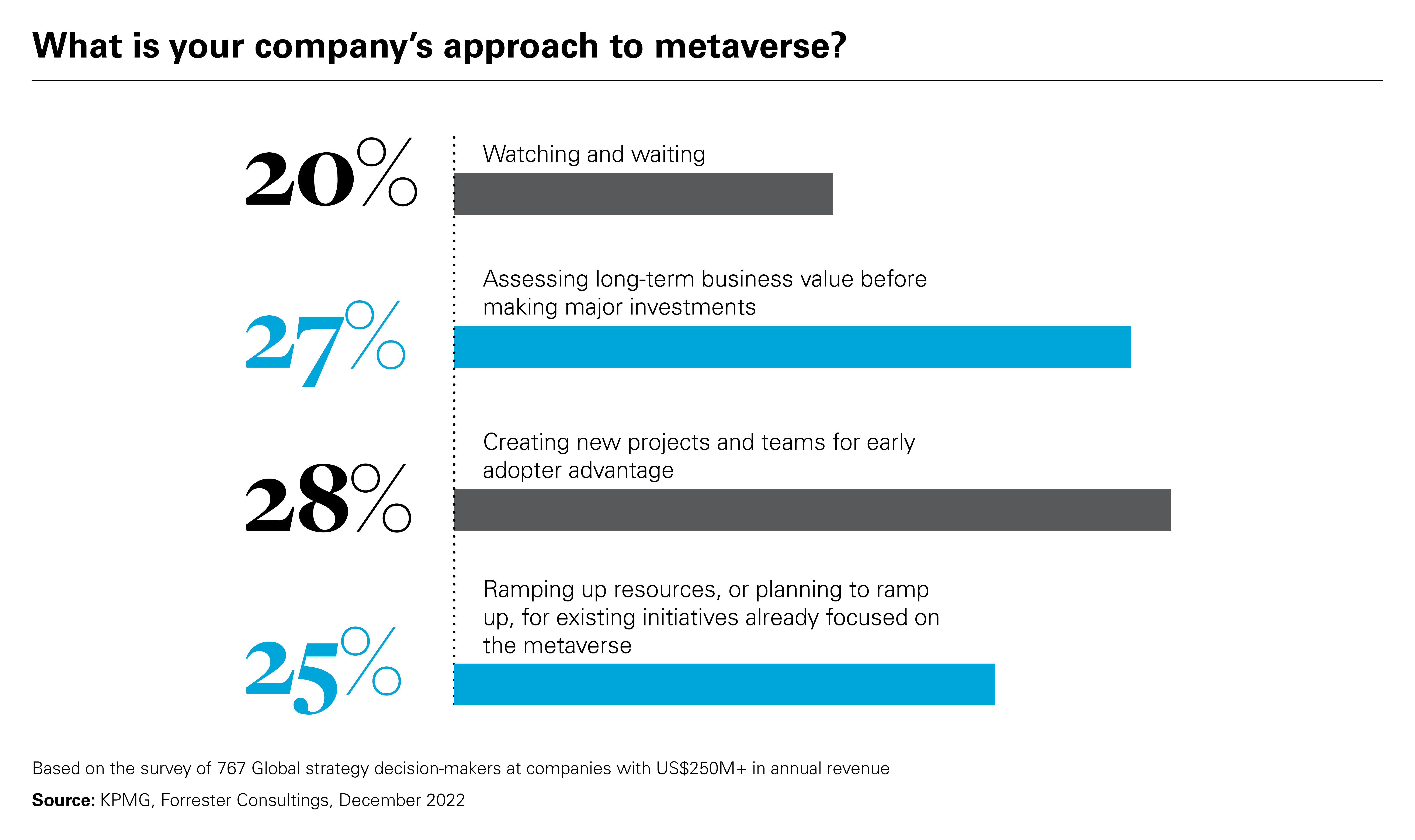 View full image: What is your company's approach to metaverse? (PDF)
View full image: What is your company's approach to metaverse? (PDF)
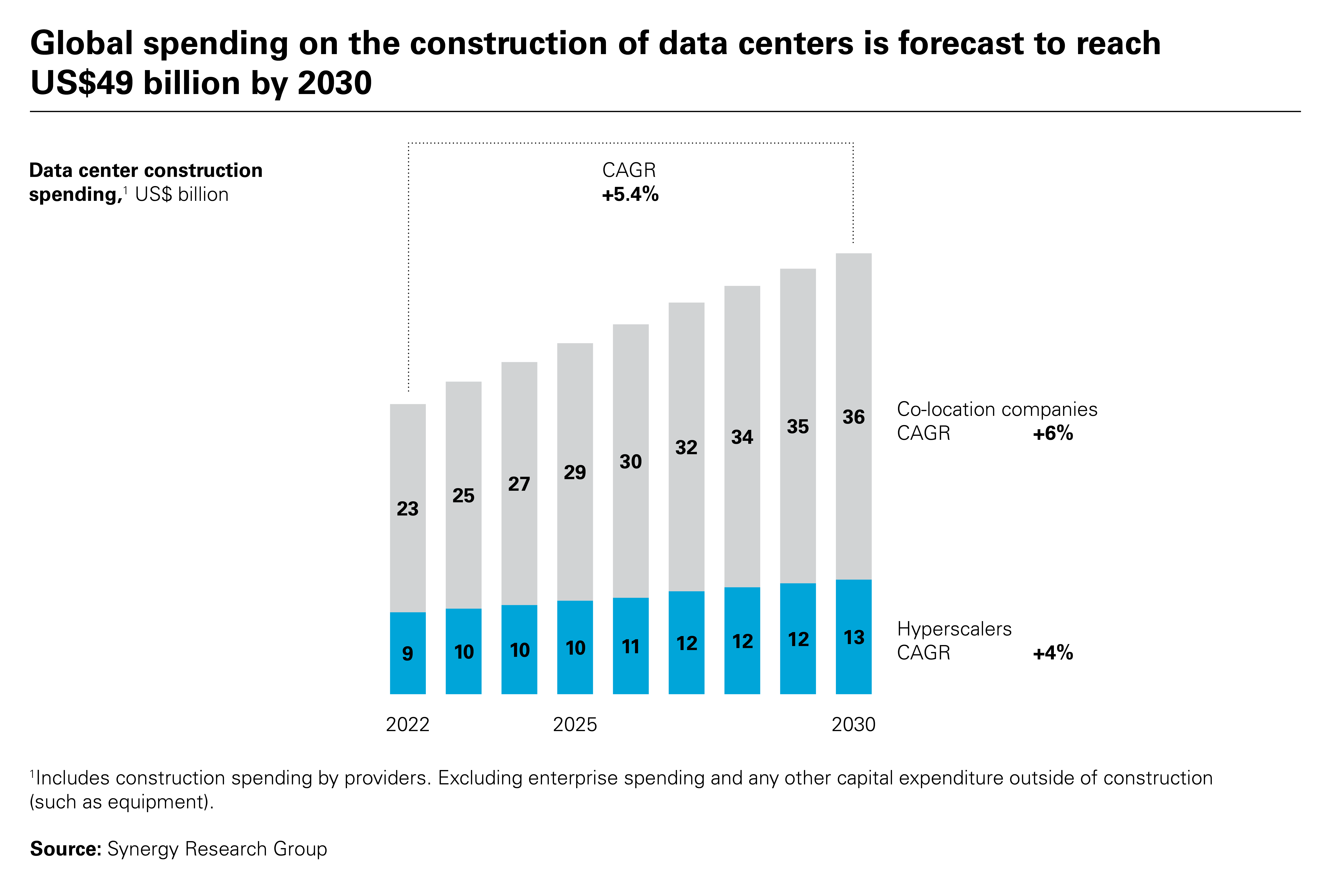 View full image: Global spending on the construction of data centers is forecast to reach US$49 billion by 2030 (PDF)
View full image: Global spending on the construction of data centers is forecast to reach US$49 billion by 2030 (PDF)
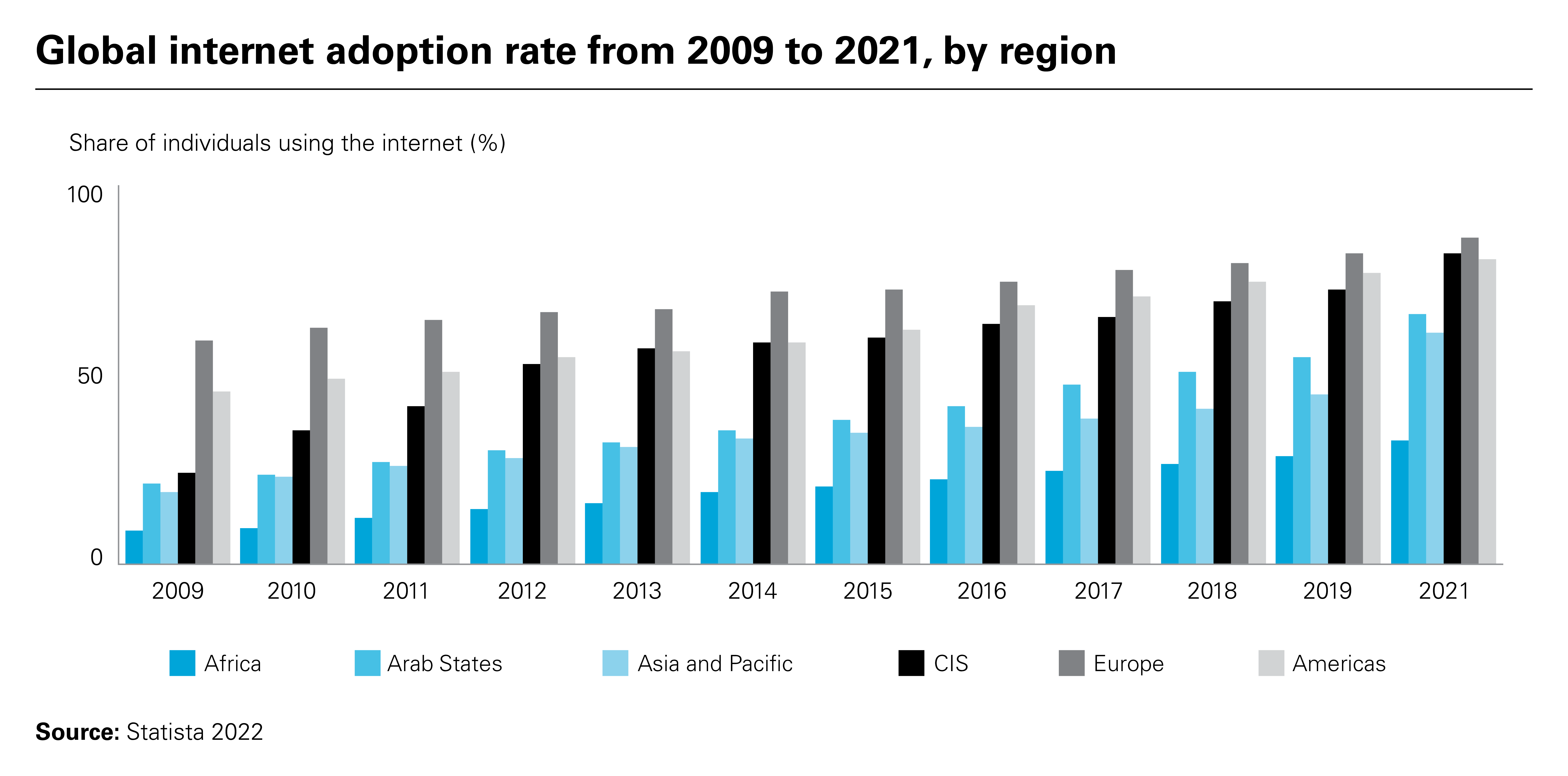 View full image: Global internet adoption rate from 2009 to 2021, by region (PDF)
View full image: Global internet adoption rate from 2009 to 2021, by region (PDF)



